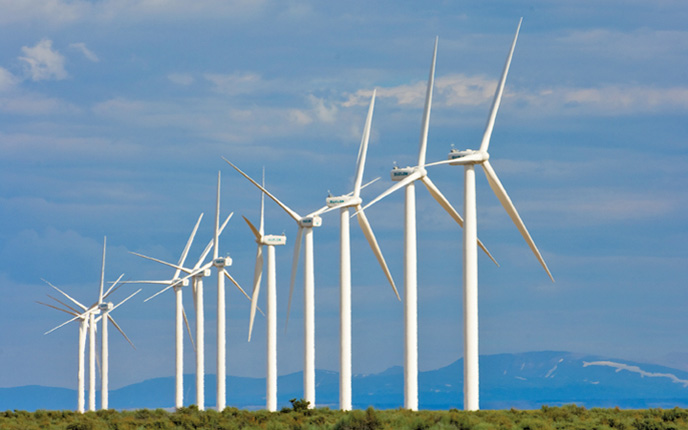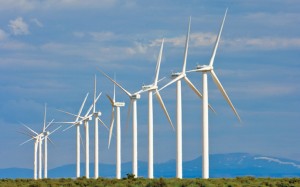 Wyoming is pretty much the Saudi Arabia of wind. In fact, Wyoming wind farms are starting to get so cheap that they can out-compete solar, gas and coal, even without subsidies.
Wyoming is pretty much the Saudi Arabia of wind. In fact, Wyoming wind farms are starting to get so cheap that they can out-compete solar, gas and coal, even without subsidies.
The financial firm Lazard released its most recent Levelized Cost of Energy Analysis, an annual report of different energy sources and their costs, which shows this progress in hard numbers. It documents that new wind power costs between $30 and $60 dollars per megawatt hour in levelized costs. And with the federal tax subsidy included, the cost of new wind falls to between $14 and $52 (Wyoming does even better than most places on cost because the state is just so windy next to the Rocky Mountains).
By comparison, coal had a higher cost of between $60 and $143 per megawatt hour, while a combined cycle natural gas plant’s cost was between $42 and $78 per megawatt hour, cheaper than coal but not as cheap as wind. Nuclear was way high, between $112 and $183.
The result of these numbers is a booming wind industry in the Cowboy State, as Heather Richards of the Casper Star-Tribune reports:
Developers Power Company of Wyoming and Viridis Eolia both have significant wind projects proposed in the state. Power Company’s Chokecherry Sierra Madre wind farm is under construction for the first phase of a 1,000 turbine farm near Rawlins. And Rocky Mountain Power, the state’s largest utility, would like to repower their entire wind fleet in the state, as well as bring 1,100 new megawatts online.
But the coal industry is not happy about it. The state’s coal sector is still the largest in the country, despite this new competition, and it’s facing considerable pressure from cheaper fuel sources both traditional and renewable. The industry hates the federal tax credit for wind and even got the state to levy a separate tax on wind production.
But with costs continuing to fall, plus the prospect of Wyoming serving out-of-state renewables market in places like California (should California successfully regionalize its grid), the coal industry’s fate will be unavoidable. In the long term, that’s not only good for air quality and stabilizing the Earth’s climate, it will also diminish the political power of the industry to try to hurt clean energy through bad tax policy, whether at the state or federal level.
 From a new study by the University of Wyoming:
From a new study by the University of Wyoming:
The wind in Wyoming tends to blow more during the winter and afternoon. California tends to be windier during the summer and at night, according to the report for the Wyoming Infrastructure Authority by Jonathan Naughton of the university’s Wind Energy Research Center.
That the wind doesn’t blow all the time and the sun doesn’t shine at night or on cloudy days are two of the biggest shortcomings of those renewable energy sources. But spreading renewable power out across the grid can make renewable energy generally more viable.
Chances are, if the wind isn’t blowing in one region, it’s gusty somewhere else.
The study compared wind patterns at California wind farms to those at sites with wind potential in Wyoming, including an approximately 1,000-turbine wind farm in south-central Wyoming that the Denver-based Anschutz Corp. plans to build to export electricity to California.
The Anschutz plant in particular will take years more to permit plus connect to transmission. But the study points to the need for better cooperation among western states to balance the plentiful renewable energy. California can’t do it alone, even with better demand response and energy storage technology. Ultimately, transmission and smart state policies will be key.


